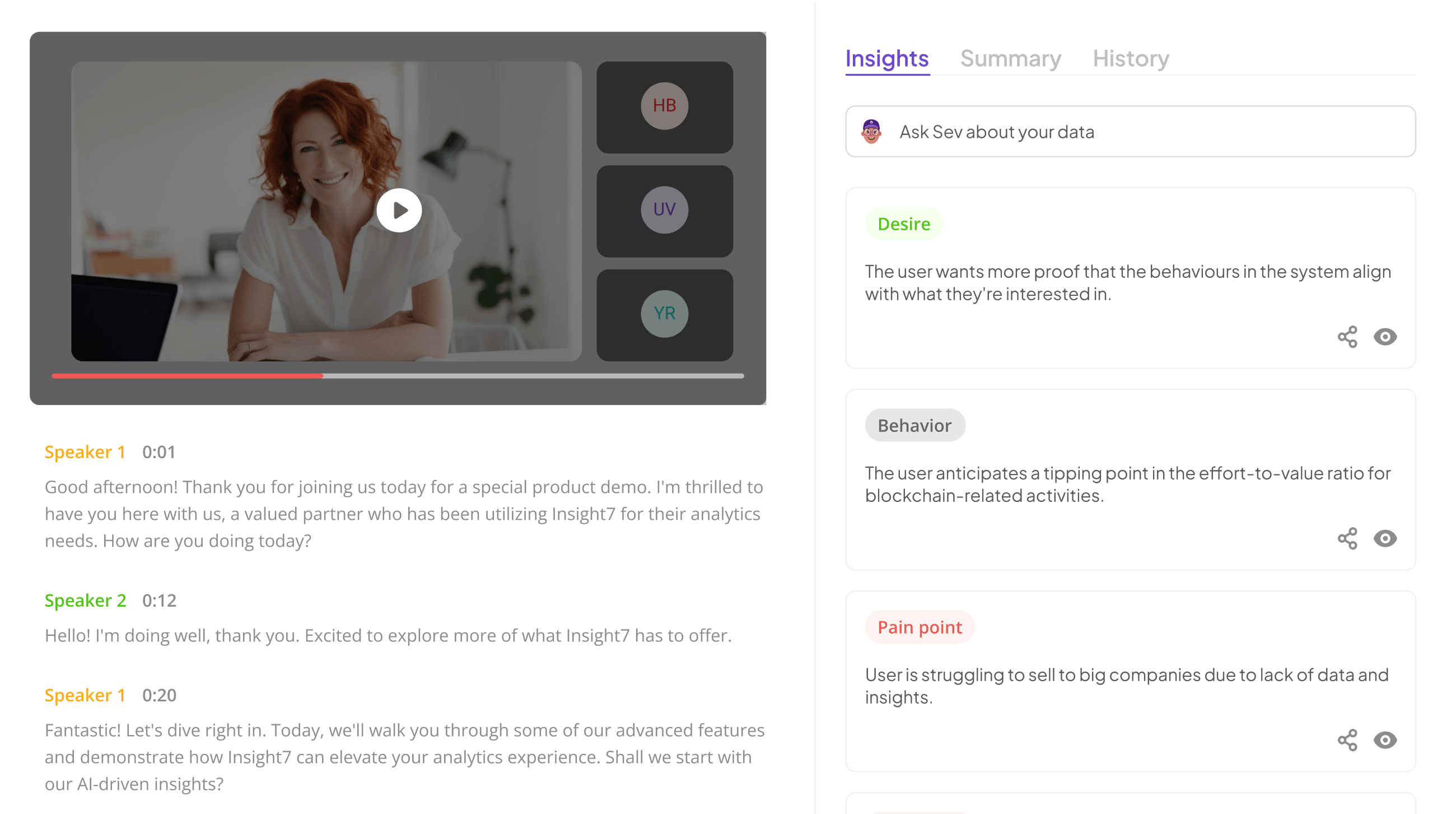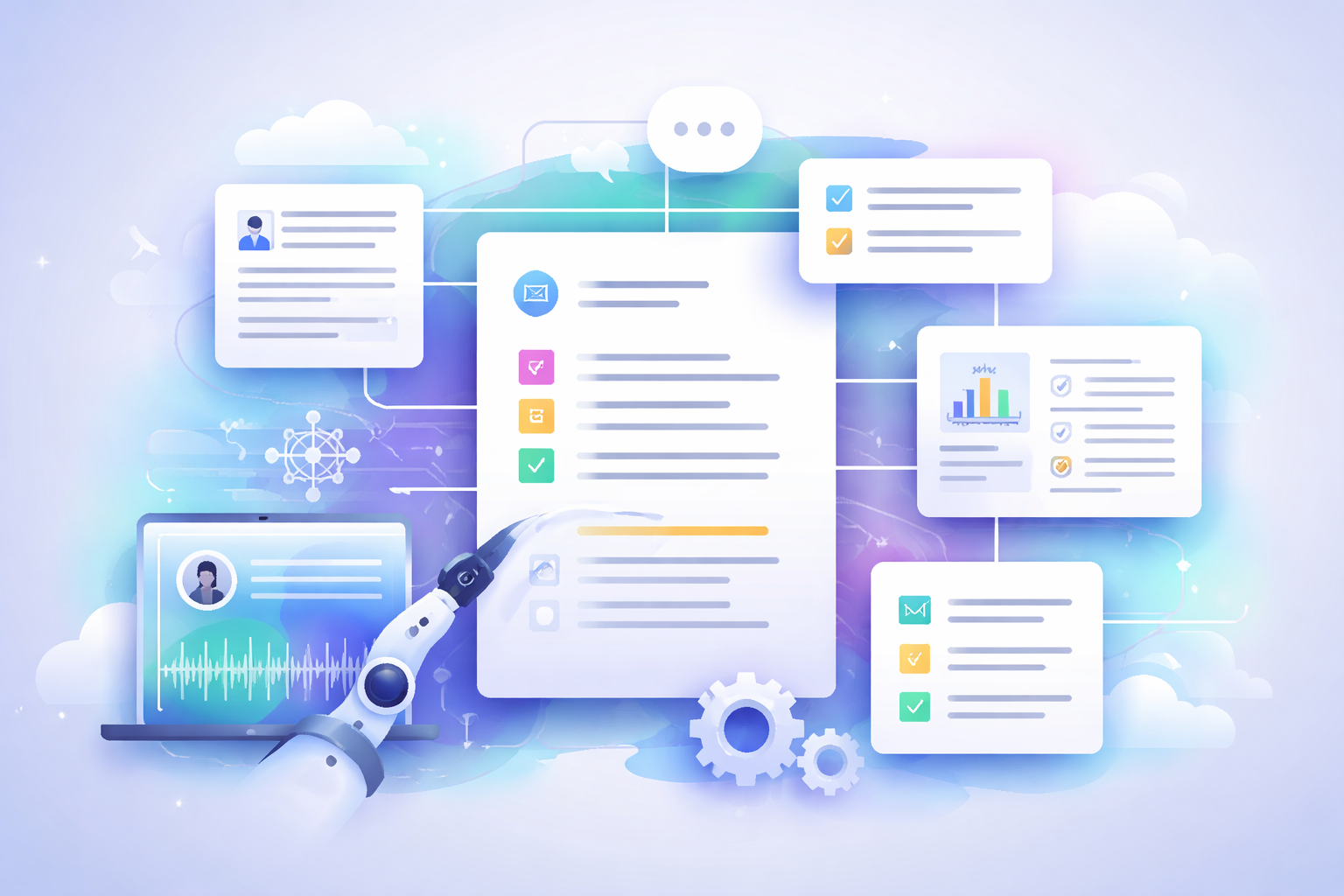How AI is Enhancing Qualitative Data Analysis
-
Bella Williams
- 10 min read
AI-driven qualitative insights are transforming how we perceive and interpret data. Traditionally, analyzing qualitative data required extensive human effort and expertise, often leading to overlooked nuances and biases. Now, with advancements in artificial intelligence, organizations can extract deeper insights from customer interactions, interviews, and feedback more efficiently.
The integration of AI tools allows teams to code and sort vast amounts of qualitative data quickly. By automatically identifying key themes, pain points, and customer sentiments, businesses can make informed decisions supported by robust evidence. Ultimately, embracing AI-driven qualitative insights not only enhances the reliability of data analysis but also democratizes access to valuable information across all levels of an organization.
Analyze & Evaluate Calls. At Scale.

Transformative Role of AI-driven Qualitative Insights in Data Analysis
AI-driven Qualitative Insights significantly transform data analysis by enhancing the understanding of complex information. Traditional qualitative analysis often relies heavily on manual processes, which can be time-consuming and biased. With AI, patterns and themes emerge more efficiently, allowing analysts to focus on key insights rather than overwhelming data sets.
One of the core benefits of AI-driven Qualitative Insights is the ability to uncover deeper narratives within the data. Automated coding and categorization streamline the process, highlighting frequent pain points and emerging trends across multiple sources. Additionally, advanced algorithms can analyze customer feedback and interviews, presenting high-level summaries that make it easier for decision-makers to grasp critical information quickly. As businesses increasingly rely on qualitative data to drive strategies, the transformative role of AI in facilitating accurate insights becomes ever more crucial.
Enhanced Data Coding and Categorization
Enhanced Data Coding and Categorization plays a crucial role in extracting actionable knowledge from qualitative data. By utilizing AI-driven qualitative insights, researchers can categorize and code vast datasets more efficiently. Traditional coding methods can often be labor-intensive and prone to human error, but AI enhances this process by identifying patterns and themes that may not be immediately evident to analysts.
This automated approach allows users to create more nuanced coding schemes, adapting dynamically to the data as new insights emerge. As AI systems continuously learn from previous analyses, they assist researchers in refining their criteria, enabling them to focus on relevant themes. Consequently, the potential for achieving a deeper understanding of complex qualitative datasets significantly increases, ultimately leading to more informed decision-making. This enhanced coding and categorization serve as pivotal elements in the evolving landscape of qualitative research, enriching the overall analysis and application of data insights.
Streamlined Data Interpretation with AI-driven Qualitative Insights
AI-driven Qualitative Insights streamline data interpretation by transforming complex qualitative data into clear, actionable insights. This process begins with automated coding and categorization, allowing users to quickly identify patterns and themes within vast datasets. Such efficiency reduces the time required for manual analysis, enabling teams to focus on decision-making rather than data processing.
Furthermore, these insights help uncover critical pain points and customer desires through detailed visualizations and structured reports. By presenting data in an easily digestible format, AI tools empower all users, regardless of expertise. This democratization of data access fosters a more inclusive environment where every team member can engage with the results. As organizations increasingly rely on AI-driven qualitative insights, the potential for enhanced understanding and strategic planning in qualitative data analysis continues to grow.
Extract insights from interviews, calls, surveys and reviews for insights in minutes
Top Tools for AI-driven Qualitative Insights in Qualitative Data Analysis
In the realm of qualitative data analysis, utilizing the right tools is pivotal for unlocking AI-driven qualitative insights. A variety of powerful platforms cater specifically to this need, enhancing the efficiency and accuracy of data interpretation. One notable tool is Insight7, which simplifies the process by enabling users to analyze customer calls and extract significant themes without requiring specialized training. This democratizes access to insights, allowing anyone in the organization to contribute to data analysis.
Another prominent tool, NVivo, offers advanced features for coding and categorizing data, facilitating deeper exploration of themes. Likewise, ATLAS.ti stands out with its visual data mapping capabilities, enabling a comprehensive view of qualitative data relationships. MAXQDA, on the other hand, incorporates mixed-methods approaches that enhance both qualitative and quantitative insights. By leveraging these tools, researchers can significantly boost their analytical capabilities, yielding actionable insights and fostering informed decision-making.
Insight7
The ongoing evolution in qualitative data analysis significantly hinges on AI-driven qualitative insights. This transformation enables teams to efficiently analyze extensive customer interactions, such as interviews and surveys, enhancing their ability to draw actionable conclusions. With the aid of AI, businesses can swiftly sort through vast amounts of qualitative data, uncovering patterns and themes that might otherwise remain hidden.
AI-driven qualitative insights streamline the data interpretation process, making it faster and more accurate. Traditional methods often result in fragmented insights that are difficult to act upon. By harnessing AI, organizations can ensure a cohesive understanding of customer feedback, leading to timely and informed business decisions. This ability to engage with insights in real-time fosters agility and competitiveness. Ultimately, the integration of AI into qualitative data analysis not only improves performance but also cultivates a deeper connection between businesses and their customers.
NVivo
NVivo is a powerful tool for researchers seeking AI-driven qualitative insights. By organizing data efficiently, it allows users to categorize and code vast amounts of qualitative information quickly. The software's project feature enables teams to compile conversations, interviews, or focus groups into manageable sections, making it easier to extract key findings. For instance, one can ask targeted questions to analyze customer feedback about a specific product and receive a consolidated summary of responses within moments.
Additionally, NVivo's intuitive interface supports direct data uploads, including transcriptions and audio files. This integration ensures researchers can seamlessly analyze their qualitative data while visualizing patterns and trends. As teams continue to embrace AI-driven qualitative insights, NVivo stands out as an invaluable resource, helping transform raw data into actionable intelligence and guiding informed decision-making processes. Through its innovative features, NVivo drives efficiency and coherence in qualitative data analysis, enhancing overall research outcomes.
ATLAS.ti
ATLAS.ti enhances qualitative data analysis by utilizing AI-driven qualitative insights to streamline the research process. Users can easily organize and manage their projects by importing various file types, including transcripts and audio files, directly into a customized library. This feature allows researchers to focus on extracting critical insights quickly, rather than getting bogged down in administrative tasks.
Moreover, AI algorithms within the software help in identifying patterns and trends within the data. By summarizing key findings, it enables users to ask specific questions and gain actionable information in real time. This efficiency transforms the research experience, making it easier for teams to understand sentiments and comments on products or services. As qualitative analysis grows increasingly complex, tools like this ensure that researchers can find clarity amidst vast data, driving better outcomes in decision-making processes.
MAXQDA
MAXQDA stands out as a robust tool in the realm of qualitative data analysis. With its emphasis on usability, it simplifies the process of extracting and analyzing qualitative insights, making it an invaluable resource for researchers and businesses alike. By incorporating AI-driven functionalities, it enhances users' ability to derive actionable insights from vast data collections quickly. The platform facilitates seamless project management, allowing users to organize and analyze data efficiently.
Users can easily upload various file types, including audio transcriptions and document files, into their projects. This capability empowers researchers to query specific segments of their data, identifying patterns and trends across extensive datasets. Consequently, MAXQDA supports a thorough exploration of qualitative data, paving the way for informed decision-making. As a result, this platform plays a significant role in the ongoing evolution of AI-driven qualitative insights, transforming how organizations interpret and harness the power of qualitative data.
Conclusion: The Future of AI-driven Qualitative Insights in Transforming Data Analysis
The evolving role of AI-driven Qualitative Insights holds significant promise for the future of data analysis. As these insights continue to shape our understanding, they empower researchers to derive deeper meanings from vast amounts of qualitative data. This not only enhances accuracy in interpreting themes and patterns, but also allows for more informed decision-making and strategic planning.
Looking ahead, AI-driven Qualitative Insights will likely become integral to various industries. The ability to analyze data swiftly and effectively will transform traditional qualitative research methods, making them more accessible and actionable. By harnessing these tools, professionals can bridge the gap between data and meaningful insights, fostering innovation and driving success in their fields.







